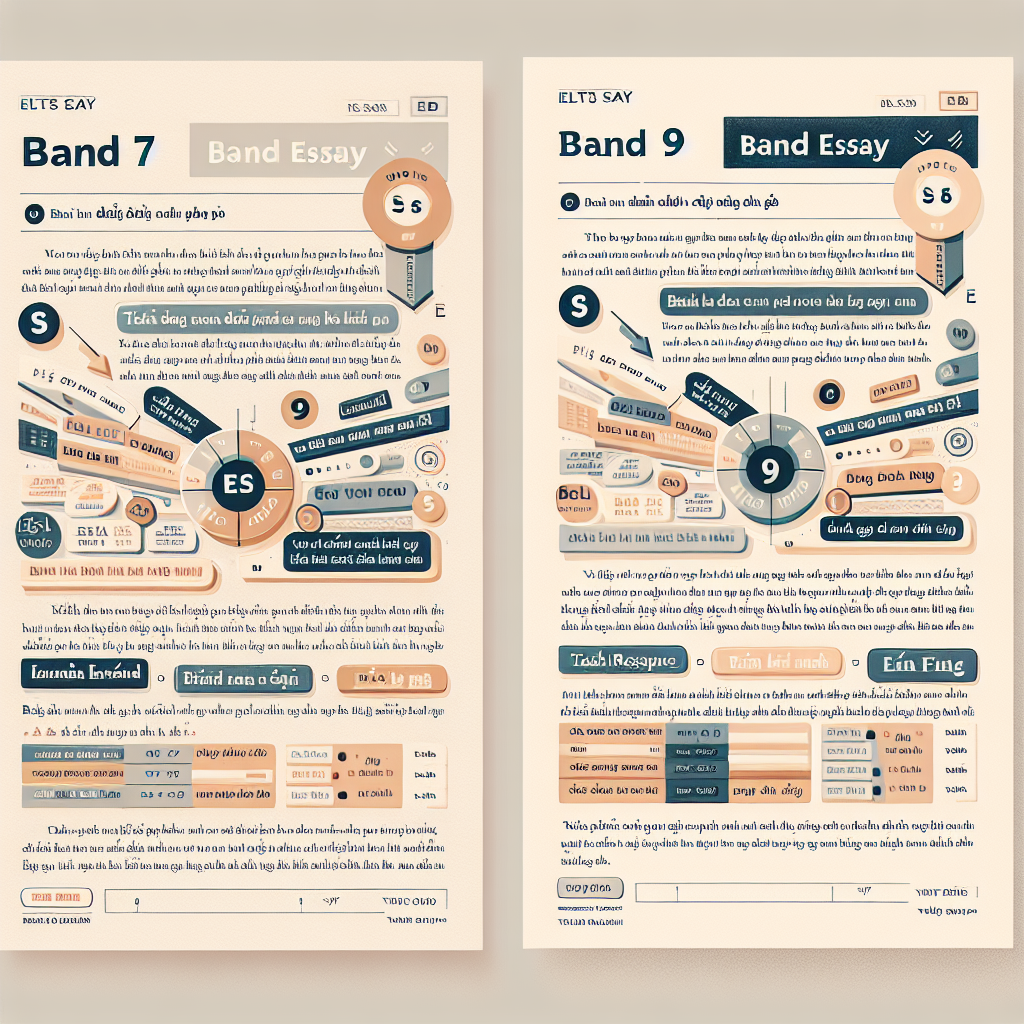Mở bài
Trong những năm gần đây, chủ đề giáo dục tài chính cá nhân và How To Build Personal Financial Security xuất hiện ngày càng thường xuyên trong IELTS Writing Task 2, nhất là dưới dạng đề nghị môn “financial education” nên được dạy bắt buộc ở trường. Đây là chủ đề sát sườn đời sống, dễ gợi ví dụ, nhưng cũng dễ lạc đề nếu không xác định đúng yêu cầu và định nghĩa “financial security”. Bài viết này giúp bạn: nắm vững 2-3 đề thi thực tế đã được ghi nhận trên các nguồn uy tín (IELTS Liz, IELTS-Blog, British Council/IDP), phân tích đề chi tiết, cung cấp ba bài mẫu Band 6-9, bảng chấm điểm theo tiêu chí chính thức, từ vựng chủ điểm, cấu trúc câu điểm cao, và checklist tự đánh giá.
Nội dung bài viết
- Mở bài
- 1. Đề Bài và Phân Tích
- 2. Bài Mẫu Band 8-9
- Phân Tích Band Điểm
- Tại Sao Bài Này Đạt Điểm Cao
- 3. Bài Mẫu Band 6.5-7
- Phân Tích Band Điểm
- So Sánh Với Bài Band 8-9
- 4. Bài Mẫu Band 5-6
- Phân Tích Band Điểm
- Học Từ Những Lỗi Sai
- Cách Cải Thiện Từ Band 6 Lên Band 7
- 5. Từ Vựng Quan Trọng cho how to build personal financial security
- 6. Cấu Trúc Câu Điểm Cao về how to build personal financial security
- 7. Checklist Tự Đánh Giá
- Kết bài
Một số đề thi thực tế (nội dung tương đương đã được đăng trên IELTS Liz/IELTS-Blog/British Council):
- Financial education should be a mandatory subject in schools. To what extent do you agree or disagree?
- In many countries, people are encouraged to buy more and more consumer goods. Is this a positive or negative development?
- Economic progress is often seen as the only measure of a country’s success, while some people think other factors are more important. Discuss both these views and give your own opinion.
[internal_link: Các dạng câu hỏi IELTS Writing Task 2]
[internal_link: Chiến lược viết essay dạng agree or disagree]
1. Đề Bài và Phân Tích
Some people argue that financial education should be a compulsory subject in schools to help young people build personal financial security. To what extent do you agree or disagree?
Dịch đề: Một số người cho rằng giáo dục tài chính nên là môn bắt buộc trong trường học để giúp người trẻ xây dựng an ninh tài chính cá nhân. Bạn đồng ý hay không đồng ý đến mức độ nào?
Phân tích đề bài:
- Dạng câu hỏi: Opinion/Agree or Disagree (nêu quan điểm và mức độ đồng ý).
- Yêu cầu: Trả lời rõ “compulsory subject” có cần thiết không, và liên hệ trực tiếp đến mục tiêu “build personal financial security” (xây dựng an ninh tài chính cá nhân).
- Thuật ngữ:
- Financial education: giáo dục về quản lý tiền, lập ngân sách, nợ, tiết kiệm, đầu tư cơ bản.
- Personal financial security: khả năng đáp ứng nhu cầu hiện tại và tương lai, có quỹ dự phòng, tránh nợ xấu, năng lực đối phó rủi ro.
- Lỗi thường gặp của học viên Việt Nam:
- Lạc đề sang “kinh tế vĩ mô” thay vì tài chính cá nhân.
- Dùng ví dụ quá chung chung, thiếu tính ứng dụng (budgeting, emergency fund, compound interest).
- Sai mạo từ (a/an/the), sai thì, thiếu giới từ trong collocations.
- Cách tiếp cận chiến lược:
- Chọn lập trường rõ: hoàn toàn đồng ý hoặc đồng ý có điều kiện.
- Xác định 2-3 luận điểm: hình thành thói quen sớm; thu hẹp bất bình đẳng kiến thức; mô hình học thực hành.
- Dẫn chứng cụ thể: lập ngân sách, “pay yourself first”, quỹ khẩn cấp 3-6 tháng, hiểu lãi kép, tránh nợ tín dụng.
 Phân tích đề IELTS về how to build personal financial security và giáo dục tài chính
Phân tích đề IELTS về how to build personal financial security và giáo dục tài chính
2. Bài Mẫu Band 8-9
Đặc điểm: Lập trường nhất quán, ví dụ cụ thể, lập luận phát triển logic, từ vựng học thuật và chủ điểm tự nhiên, cấu trúc câu đa dạng.
Bài luận (khoảng 300 từ):
In an era of rising living costs and volatile job markets, teaching teenagers how money works is no longer optional; it is basic literacy. I strongly agree that financial education should be compulsory because it builds habits and knowledge that underpin personal financial security across a lifetime.
First, adolescents who learn budgeting, the discipline of “pay yourself first,” and the mathematics of compound interest are far more likely to avoid costly mistakes in early adulthood. A simple routine—allocating income to essentials, savings and investments before discretionary spending—creates a buffer in the form of an emergency fund. This cushion transforms a setback, such as a medical bill or job transition, from a crisis into a manageable event, thereby strengthening financial resilience.
Secondly, making the subject mandatory improves equity. Not every household can model sound money management; schools can level the playing field by teaching how credit cards work, what “minimum payments” really mean, and why low-cost index funds often outperform impulsive stock-picking. Objections about an already packed curriculum can be addressed by integrating finance with mathematics and civics through project-based tasks: students design a monthly budget, simulate a mortgage comparison, or track a diversified portfolio in a sandbox. Such assessment is authentic and prevents the topic from becoming abstract.
Admittedly, classroom lessons cannot eliminate every behavioural bias, from impulse buying to fear-driven selling. Yet schools can teach behavioural nudges—automated transfers to savings, default contribution rates, and goal-based envelopes—that make the desired choice the easy choice. In short, while financial education is not a cure-all, it is the most scalable way to equip young people with tools to build and protect wealth.
Therefore, embedding compulsory financial education is a prudent policy: it cultivates sound habits, reduces avoidable debt, and gives every graduate a fair start on the road to how to build personal financial security.
Phân Tích Band Điểm
| Tiêu chí | Band | Nhận xét |
|---|---|---|
| Task Response (Hoàn thành yêu cầu) | 8.5 | Trả lời trực tiếp, lập trường rõ ràng “strongly agree”, phát triển đủ 2-3 luận điểm, có phản biện ngắn gọn. Ví dụ minh họa sát “budgeting”, “emergency fund”, “index funds”. |
| Coherence & Cohesion (Mạch lạc & Liên kết) | 8.0 | Bố cục 4 đoạn, câu chủ đề rõ, chuyển ý mượt (first, secondly, admittedly, therefore). Dùng tham chiếu và lặp có kiểm soát để tạo mạch, không lạm dụng từ nối. |
| Lexical Resource (Từ vựng) | 8.5 | Từ vựng chủ đề phong phú: compound interest, behavioural nudges, equity, resilience. Collocations tự nhiên: level the playing field, project-based tasks. Hầu như không lỗi từ vựng. |
| Grammatical Range & Accuracy (Ngữ pháp) | 8.0 | Đa dạng cấu trúc: mệnh đề phụ, không xác định, cụm phân từ; câu điều kiện ẩn. Độ chính xác cao, dấu câu và chuẩn hóa hình thái tốt. |
Tại Sao Bài Này Đạt Điểm Cao
- Lập trường nhất quán và được nhắc lại ở mở bài và kết bài.
- Ví dụ “emergency fund”, “minimum payments” cụ thể, tránh sáo rỗng.
- Xử lý phản biện gọn: thừa nhận hạn chế hành vi nhưng đưa giải pháp “nudges”.
- Tổ chức đoạn theo tư duy nguyên nhân → hệ quả → giải pháp.
- Từ vựng giàu tính học thuật và sát chủ điểm, không phô trương.
- Câu phức đa dạng nhưng tự nhiên; độ dài câu linh hoạt.
- Gắn chặt mục tiêu đề bài: giúp người trẻ xây dựng an ninh tài chính.
[internal_link: Cách phát triển idea và ví dụ trong IELTS Task 2]
3. Bài Mẫu Band 6.5-7
Đặc điểm: Lập luận hợp lý, từ vựng đủ dùng, có vài điểm chưa sâu hoặc lặp, lỗi nhỏ nhưng không gây hiểu nhầm.
Bài luận (khoảng 265 từ):
Many people believe schools should teach money skills, and I mostly agree because this knowledge can prevent avoidable mistakes and create stability for young adults. However, it should be delivered in practical ways rather than through abstract theory.
To begin with, basic concepts like budgeting, saving for an emergency fund, and understanding interest can help students plan their spending and avoid debt. When teenagers learn to set aside a small amount every month, they practise discipline and are better prepared for sudden costs, such as a phone repair or tuition fees. If students also compare bank accounts and understand how credit cards charge interest, they are less likely to fall into long-term liabilities.
Nevertheless, simply adding a new subject may not work if lessons are boring or disconnected from real life. A more effective approach is to integrate finance into maths projects and social studies. For example, students can design a simple monthly budget for a part-time worker, or track a mock investment account using an index fund, noting how fees affect returns. These activities show that small, regular savings matter, which supports the idea of personal financial security.
In conclusion, I support compulsory financial education, but it must be practical and hands-on. If schools focus on everyday decisions—how to save, how to compare products, and how to avoid high-interest debt—graduates will be more capable of managing their money and building long-term security.
Phân Tích Band Điểm
| Tiêu chí | Band | Nhận xét |
|---|---|---|
| Task Response (Hoàn thành yêu cầu) | 7.0 | Trả lời đúng trọng tâm, có quan điểm “mostly agree”. Lập luận đủ ý nhưng thiếu chiều sâu về tác động dài hạn và bình đẳng cơ hội. |
| Coherence & Cohesion (Mạch lạc & Liên kết) | 7.0 | Liên kết đoạn rõ, dùng ví dụ thực tế. Từ nối đa dạng vừa phải, có đôi chỗ lặp cấu trúc câu mở đoạn. |
| Lexical Resource (Từ vựng) | 7.0 | Từ vựng chủ đề phù hợp: interest, credit cards, fees, liabilities. Một số collocations còn phổ thông; ít từ học thuật nâng cao. |
| Grammatical Range & Accuracy (Ngữ pháp) | 6.5 | Cấu trúc câu đa dạng ở mức trung bình; phần lớn chính xác, một vài câu đơn dài hơi, có thể cải thiện mệnh đề phụ và phân từ. |
So Sánh Với Bài Band 8-9
- Bài 8-9 có phản biện sắc hơn (bias hành vi, giải pháp “nudges”) và hướng chính sách rõ. Bài 6.5-7 dừng ở mức “thực hành là tốt”.
- Từ vựng bài 8-9 đa tầng (equity, resilience, project-based, sandbox), trong khi bài 6.5-7 thiên về từ phổ thông.
- Cấu trúc câu bài 8-9 linh hoạt, nhiều cụm phân từ và mệnh đề quan hệ không xác định; bài 6.5-7 dùng nhiều câu đơn/ghép.
 So sánh bài mẫu IELTS Task 2 về giáo dục tài chính các mức band
So sánh bài mẫu IELTS Task 2 về giáo dục tài chính các mức band
4. Bài Mẫu Band 5-6
Đặc điểm: Nêu được quan điểm nhưng còn lặp ý, ví dụ mơ hồ, lỗi ngữ pháp và từ vựng thấy rõ; liên kết rời rạc.
Bài luận (khoảng 255 từ):
People think finance should be taught in school, and I agree, but the way schools do it is sometimes not good. Firstly, students can learn about budget and save money for future. If they know this, they will not waste money and they will have a lot of moneys when they need. Also, they should know about interest rate is dangerous because it makes debt bigger.
Secondly, schools can make the course but many teachers don’t have enough knowledge about finances, so the class become boring. Students only listen and write, they cannot do practice. In the other hand, some parents already teach money at home, so school class is not necessary. Many students just want to pass exam, so they forget these lessons after test.
In conclusion, I think financial education is important but schools should do it better. They can teach how to make investment in stock fast and how to be rich. If schools help students to be rich, this will improve country economy and people life. So, financial education is good and should be compulsory in school.
Phân Tích Band Điểm
| Tiêu chí | Band | Nhận xét |
|---|---|---|
| Task Response (Hoàn thành yêu cầu) | 5.5 | Có quan điểm nhưng phát triển ý nông, ví dụ mơ hồ, một số nội dung lệch (dạy “làm giàu nhanh”). |
| Coherence & Cohesion (Mạch lạc & Liên kết) | 5.5 | Liên kết yếu, lặp từ, từ nối sai (“In the other hand”), thiếu câu chủ đề rõ ràng. |
| Lexical Resource (Từ vựng) | 5.5 | Dùng từ hạn chế, nhiều collocations sai hoặc tự nhiên thấp (“a lot of moneys”, “interest rate is dangerous”). |
| Grammatical Range & Accuracy (Ngữ pháp) | 5.0 | Lỗi mạo từ, số ít/số nhiều, giới từ, thì; câu ghép kém chuẩn; một số cấu trúc rời rạc. |
Học Từ Những Lỗi Sai
| Lỗi sai | Loại lỗi | Sửa lại | Giải thích |
|---|---|---|---|
| can learn about budget | Collocation | can learn about budgeting | “Budgeting” mới đúng danh động từ chỉ kỹ năng. |
| a lot of moneys | Số nhiều | a lot of money | “Money” là danh từ không đếm được. |
| interest rate is dangerous | Từ vựng/Ngữ pháp | high interest rates can be costly | Diễn đạt tự nhiên và chính xác về chi phí lãi. |
| In the other hand | Cụm nối | On the other hand | Cụm chuẩn là “On the other hand”. |
| finances (teachers don’t have…) | Từ loại | don’t have enough financial knowledge | “Financial knowledge” là cụm danh từ đúng nghĩa. |
| the class become boring | Hòa hợp chủ-vị | the class becomes boring | Chủ ngữ số ít “class” + “becomes”. |
| teach how to make investment in stock fast | Tính tự nhiên | teach basic investing principles in the stock market | Tránh “fast”, dùng collocation tự nhiên. |
| improve country economy and people life | Mạo từ/Sở hữu | improve the country’s economy and people’s lives | Sử dụng sở hữu cách và số nhiều chính xác. |
Cách Cải Thiện Từ Band 6 Lên Band 7
- Tập trung vào mục tiêu “an ninh tài chính cá nhân” thay vì “làm giàu nhanh”.
- Bổ sung ví dụ cụ thể và khả thi: lập ngân sách 50-30-20, quỹ khẩn cấp 3-6 tháng, so sánh thẻ tín dụng.
- Sửa các lỗi cơ bản: mạo từ (a/an/the), danh từ không đếm được, giới từ trong collocations.
- Đa dạng hóa câu: thêm mệnh đề phụ, cụm phân từ; tránh câu quá ngắn hoặc nối bằng “and” liên tiếp.
- Nâng cấp collocations: build financial resilience, avoid high-interest debt, long-term returns.
5. Từ Vựng Quan Trọng cho how to build personal financial security
| Term | POS | IPA | Nghĩa tiếng Việt | Example (EN) | Collocations |
|---|---|---|---|---|---|
| financial security | n | /fɪˈnænʃl sɪˈkjʊərəti/ | an ninh tài chính | Building financial security requires consistent habits. | build/maintain financial security; long-term financial security |
| budgeting | n/gerund | /ˈbʌdʒɪtɪŋ/ | lập ngân sách | Budgeting helps you live within your means. | zero-based budgeting; monthly budgeting |
| compound interest | n | /ˌkɒmpaʊnd ˈɪntrəst/ | lãi kép | Compound interest rewards early savers. | calculate compound interest; benefit from compound interest |
| emergency fund | n | /ɪˈmɜːdʒənsi fʌnd/ | quỹ khẩn cấp | An emergency fund covers unexpected expenses. | build an emergency fund; three-to-six-month emergency fund |
| discretionary spending | n | /dɪˈskrɛʃən(ə)ri ˈspɛndɪŋ/ | chi tiêu tùy ý | Cut discretionary spending to increase savings. | reduce discretionary spending |
| live within one’s means | v/idiom | /lɪv wɪˈðɪn wʌnz miːnz/ | sống trong khả năng chi trả | He finally learned to live within his means. | learn to live within one’s means |
| index fund | n | /ˈɪndɛks fʌnd/ | quỹ chỉ số | Low-cost index funds suit beginners. | low-cost index fund; track the market |
| passive income | n | /ˈpæsɪv ˈɪnkʌm/ | thu nhập thụ động | Rental units can generate passive income. | generate passive income |
| financial literacy | n | /fɪˈnænʃl ˈlɪtərəsi/ | hiểu biết tài chính | Financial literacy should be taught in schools. | improve financial literacy; financial literacy program |
| behavioural nudge | n | /bɪˈheɪvjərəl nʌdʒ/ | “cú hích” hành vi | Automatic transfers are a behavioural nudge. | apply behavioural nudges |
| inflation-adjusted | adj | /ɪnˈfleɪʃn əˈdʒʌstɪd/ | điều chỉnh theo lạm phát | Set inflation-adjusted goals for retirement. | inflation-adjusted returns |
| long-term returns | n | /lɒŋ tɜːm rɪˈtɜːnz/ | lợi nhuận dài hạn | Index funds can deliver solid long-term returns. | deliver/seek long-term returns |
| on the one hand / on balance | linker | — | một mặt / nhìn chung | On balance, compulsory classes are beneficial. | on the one hand… on the other hand |
| allocate | v | /ˈæl.ə.keɪt/ | phân bổ | Allocate 20% of income to savings. | allocate resources/funds |
| compulsory (mandatory) | adj | /kəmˈpʌlsəri/ | bắt buộc | Financial education should be compulsory. | compulsory subject/education |
[internal_link: Collocations chủ đề Education và Finance]
6. Cấu Trúc Câu Điểm Cao về how to build personal financial security
- Câu phức với mệnh đề phụ thuộc
- Công thức: [Mệnh đề phụ] + [Mệnh đề chính]
- Ví dụ từ bài Band 8-9: While financial education is not a cure-all, it equips young people with tools to build and protect wealth.
- Vì sao ghi điểm: Tạo sắc thái nhượng bộ, thể hiện tư duy hai chiều.
- Ví dụ bổ sung:
- Although budgets are simple, they are often ignored.
- If schools integrate finance into maths, learning becomes authentic.
- Lỗi thường gặp: Thiếu dấu phẩy sau mệnh đề phụ đứng đầu câu; dùng “Because” mở câu nhưng không có mệnh đề chính đầy đủ.
- Mệnh đề quan hệ không xác định
- Công thức: Danh từ, which/whose + mệnh đề, mệnh đề chính
- Ví dụ: Project-based tasks, which simulate real choices, prevent the topic from becoming abstract.
- Vì sao ghi điểm: Bổ sung thông tin, tăng tính học thuật.
- Ví dụ:
- Index funds, which track the market, reduce fees.
- Credit cards, which seem convenient, can be costly.
- Lỗi thường gặp: Quên dấu phẩy; dùng “that” thay “which” trong mệnh đề không xác định.
- Cụm phân từ
- Công thức: V-ing/V-ed + cụm bổ nghĩa, mệnh đề chính
- Ví dụ: Allocating income to essentials and savings, students create a protective buffer.
- Vì sao: Cô đọng, nhịp câu linh hoạt.
- Ví dụ:
- Understanding compound interest, many start earlier.
- Burdened by high-interest debt, families lose flexibility.
- Lỗi: Lủng chủ ngữ (dangling participle) khi chủ ngữ của cụm không trùng chủ ngữ chính.
- Câu chẻ (Cleft sentences)
- Công thức: It is/was + thành phần nhấn mạnh + that/who + mệnh đề
- Ví dụ: It is early habit formation that safeguards financial security.
- Vì sao: Nhấn mạnh luận điểm trọng tâm.
- Ví dụ:
- It is behavioural nudges that change daily choices.
- It was the lack of budgeting that caused overspending.
- Lỗi: Nhầm “that”/“who”; lặp lại cấu trúc quá nhiều gây nặng nề.
- Câu điều kiện nâng cao
- Công thức: If/Should/Were + S + to V, S + would/could…
- Ví dụ: Should schools integrate finance into core subjects, outcomes would improve.
- Vì sao: Trang trọng, linh hoạt.
- Ví dụ:
- Were fees lower, long-term returns would rise.
- If students had built an emergency fund, they would have avoided debt.
- Lỗi: Sai thì trong mệnh đề điều kiện loại 2/3; thiếu đảo “Were/Should”.
- Đảo ngữ nhấn mạnh
- Công thức: Not only + trợ động từ + S + V, but also…
- Ví dụ: Not only does compulsory finance education reduce avoidable debt, but it also promotes equity.
- Vì sao: Tạo nhịp điệu, nhấn mạnh hai lợi ích song song.
- Ví dụ:
- Only by starting early can students harness compound interest.
- Under no circumstances should schools promote get-rich-quick schemes.
- Lỗi: Quên đảo trợ động từ; dùng sai thời thì sau đảo ngữ.
7. Checklist Tự Đánh Giá
Trước khi viết:
- Xác định đúng dạng câu hỏi (agree/disagree, discuss both…).
- Chốt lập trường 1 câu.
- Lập dàn ý 2-3 luận điểm sát how to build personal financial security: budgeting, emergency fund, avoiding high-interest debt, index funds.
- Chuẩn bị 1-2 ví dụ cụ thể, khả thi.
Trong khi viết:
- Mỗi đoạn 1 ý chính, mở đoạn bằng topic sentence rõ.
- Dùng collocations tự nhiên; tránh lặp từ khóa quá mức.
- Kiểm soát mạo từ (a/an/the), giới từ (invest in, pay for), thì động từ.
- Liên kết mượt: however, on balance, as a result, consequently.
Sau khi viết:
- Soát lỗi ngữ pháp phổ biến: subject–verb agreement, danh từ không đếm được (money, advice), dấu phẩy.
- Kiểm tra tính liên quan: mọi ví dụ đều phục vụ “financial security”.
- Đếm từ (260–320 cho Task 2 an toàn), không viết dưới 250 từ.
Mẹo quản lý thời gian:
- 5–7 phút phân tích đề + dàn ý.
- 25 phút viết 4 đoạn.
- 5–7 phút rà soát và chỉnh lỗi.
 Checklist và chiến lược viết IELTS về how to build personal financial security
Checklist và chiến lược viết IELTS về how to build personal financial security
Kết bài
Chủ đề how to build personal financial security trong IELTS Writing Task 2 đòi hỏi bạn vừa hiểu khái niệm cốt lõi (budgeting, emergency fund, lãi kép, nợ lãi cao) vừa biết phát triển lập luận gắn với giáo dục tài chính. Bạn đã có: 3 bài mẫu từ Band 5 đến 9, bảng chấm điểm chi tiết, bộ từ vựng và cấu trúc câu trọng điểm, cùng checklist thực hành. Con đường cải thiện rõ ràng: luyện phân tích đề, xây dàn ý chặt chẽ, sử dụng collocations đúng ngữ cảnh và kiểm soát lỗi cơ bản. Hãy viết lại đề hôm nay với lập trường của bạn, đăng trong phần bình luận để nhận phản hồi từ cộng đồng học tập. Với sự luyện tập có chủ đích 3–4 bài/tuần trong 4–6 tuần, bạn có thể nâng một band điểm Task 2 một cách thực tế. Tài nguyên bổ sung: [internal_link: Dàn ý mẫu cho các dạng Task 2], [internal_link: 100 collocations học thuật thường gặp].


